#its the like culprit and victim motif
Explore tagged Tumblr posts
Text
Long Ramble about CCCC and my overall feelings on what the album means and such
Something I find important about CCCC is like.
The fact that all three of them are, in some way, trying.
Heart is emotion, he is prone to himself and being reactionary, in the moment. Prone to the past of learned behavior and trauma. Reactive and rapidly changing. He isn't going to make pure sense because he isn't based in logic or in societal ideals or views. He is an instinctual response to the environment and circumstances. His manipulation is not intentional. He has very little control of himself in the end. Its why Mind talks about claiming to relish entropy yet clearly needing help. But, Heart in earnest wants them to be okay and safe. He believes that Mind's control will drain the life from them. It will make things monotonous and the same. Too much order.
Mind in turn, believes Heart is manipulative with intention. He wants to control Soul or wants to just drag them all down with him into this depressive state. Mind is logic, he is the reasoning out of your emotional instinct. Your inner critique, and when unchecked, that inner critique goes from a guiding hand for your emotion to one that debates and bullies it. Invalidating its responses. Ultimately, though. Mind just believes he is helping. He is doing what must be done and telling the "hard truths" to Heart. And that Heart is being the petty child. Which- I mean. Sort of sure. But Mind is definitely fucking petty and childish. He's stubborn! Prideful! So ofc he is. Admitting you're wrong? No.. why would he EVER do that.. nuh uh.
Which is what makes Light so crucial. Mind asking Heart for help- but also. There is Soul.
Who while ambiguous in purpose, is mostly that background voice. Your inner narration. If Mind is Logic and Reason then Heart is Emotion and Instinct,, Soul is all that lives between it. And he is constantly silenced or spoken over or around. He does not get a word in edgewise until TSE. He may show up in the background occasionally but as much as Heart and Mind claim to want to keep him alive and help him, they also fail to actually acknowledge what he says.
Which is that they both are right and wrong. That this fighting is doing directly what they both feared it would. Soul is desperate by the end. He is angry and resentful because.. well. Self hatred due to intense self awareness and reflection is rather ig. Common. Im not a professional here but from personal experience, you get so tired of rehashing the same shit with yourself over and over. It all feels pointless.
The only out, by the end of it all to Soul is that if they cannot be Whole, whats the point? He is desperate. He does not want to die but he feels theres no other solution.
And. About Whole, Soul throughout the album seems to want that. At the beginning, to be Whole or Harmonious is to be mentally healthy, maybe even "normal" by society's standards. To be able to put a mask over your problems and be, again, "normal". It takes the entire album for Soul to realize that this:
1. isnt possible
And
2. There isn't anything evil or wrong with him for that.
Mental health is a struggle. But you are not evil and should not be othered because you struggle. You also do not need to be fixed for being a little different and people's opinion of you is not what matters most so long as you are happy (and not hurting others. Lol).
Thats what Two Wuv is entirely about as a song. Its a "fuck you. Fuck this! I thought I needed to be this! But I DON'T. Stop telling me who I am! How to be! I'm gonna be me!"
His entire arc is parallel to Heart and Mind's and is crucial in the culmination of becoming yourself again and accepting yourself.
But, as mental health will always be, this period of respite and self acceptance is not always forever. And as life continues or as you lapse back into a depressive episode.. you cannot help but forget what it is like when you're not this way- and hell! Vice versa too! Some people have this disconnect between the periods. Where the things from the depressive state seem dramatic or obtuse to you while you are doing better. And from the other end, you just want to be happy again.. but you get so lost in it all you can struggle to feel like you've ever been happy.
The album is about the human experience. It is about self-sabotage, mental illness, self-hatred and reflection and it is, maybe more importantly about self-acceptance and healing. Having a bit of mercy on yourself. Accepting that you are imperfect and that this is okay. And whatever flaws you may have that need to be mended or worked on, can be. And that who you are, for example, if you are queer, is okay. And no one has the right to take that identity from you! That the internalized ideas of how someone should be are not always correct or right. Not for you, at least. Stuff like that.
#chonnys charming chaos compendium#chonny jash#voidthoughts#i know the album is interpretive!! but i also think it is crucial that we dont pin any one of them down as villains or anything#that like while hms are all flawed and cruel to one another they ultimately are also victims of themselves its#its the like culprit and victim motif#the “you're doing this to yourself and you shouldn't feel you have to do that”#internal communication with yourself. learning kindness and humility and whatnot is very important!!#thats all
256 notes
·
View notes
Text
Ren's "similar to Umineko" list! (now overhauled)(You're welcome)
Stuff on here reminds me of Umineko for a variety of reasons. If I add to it, I'll just edit this post and add the date I added it to this list. Separated by genre this time.
Under the read-more, with the "why it reminds me of Umineko" blurb after the title rather than a whole plot synopsis like I had done in the previous list
Feel free to rec stuff in tags or in comments etc. if I haven't read/played/watched it it might be hard for me to add it but I'll definitely add it to my own list of things to check out!
VIDEO GAMES The House In Fata Morgana - Visual novel, Unreliable narration, witch haunting an illusory mansion for thousands of years, cycles of abuse and trauma, Gothic setting, romance 9 Hours 9 Persons 9 Doors - Visual novel, "The killer is among us" (lol), murder mystery scoping out paranormal/metaphysical elements and twisting them into its own crazy logic, romance NieR Replicant - It's up to you to find your own happiness whatever that means to you despite the circumstances of the world you're living in or your own birth Alan Wake - Author creates and infers reality around him, horror setting, unreliable narration, creations rallying against their creator Alan Wake 2 - see the above, it's the sequel, except Alan Wake 2 is an actual survival horror. I didn't like Alan Wake 1 much but I'm LOVING 2 so far. The Forgotten City - I haven't played this just saw someone on Twitter say to play it if you like Umineko so I'm trusting their recommendation Pathologic Classic HD - Questions of morality, wishy-washiness on the reality of the fantastical elements of the town's culture, meta universe shenanigans forcing you to contend with "none of this matters, so why do/should I care?" Patho 2 can probably go here too but I am playing that at the moment.
ANIMANGA Naoki Urasawa's Monster - "Why did the culprit do this?" over "Who is the culprit?", murder mystery, cycles of abuse, questions of character identity, the ultimate "victim of circumstances has created the monster" situation Shiki - Sleepy town being annihilated by an unknown threat, humans doing unspeakable things in the name of justice, the question of the antagonist's morality/justice is brought to the forefront and maybe they were right all along...? Princess Tutu - Characters who have been created for a story and are living out a narrative sort of against their will, the narrative as a framing device and also a prison, love love love lots of love, the death of the author and what this means for a tale and the characters within it too--if you can only call them characters I Want To Hold Aono-kun so Badly I Could Die - romantic relationships as a way to combat your personal loneliness, horror and romance and how they intersect...kind of hard to explain this one unless you've finished Umineko but this manga really reads like AU Bato[redacted] to me so far, lots of supernatural elements, learning how to find happiness
TV Succession - Rich people dealing with their abusive and unpredictable father deciding who will be the successor for the family business and dragging everyone else into it, cycles of literally every sort
MOVIES Knives Out (2019) - Rich family called to a house to discuss the ailing patriarch's will only for him to be murdered, murder mystery Haven't seen Glass Onion yet but that too. Decision To Leave (2022) - Confessions of the unspeakable as acts of love, Another time another place maybe it could have worked, I created myself to love you, tragic romance, the sea as a motif representing character worlds Memento (2000) - it's up to the watcher to interpret events as they happen and piece them together, the most unreliable narrator of narrators, just go in blind The Prestige (2006) - Magicians get into a big dick competition and destroy their relationships for the sake of greatness, branches into metaphysical territory for the sake of pursuing magic House (1977) - Group of girls visit an ancient family home, horror setting, love is always enduring for better or for worse, witches, using other bodies to fulfill your own wish
BOOKS The Locked Tomb Quartet - Cites Umineko (and 999!) as an inspiration and Muir is a very very referential reader so it's kind of hard to say stuff without spoiling TLT also so honestly just go read it. Magpie Murders - Murder within a murder And Then There Were None (duh) - Directly inspired Umineko and the murders within Umineko The Last Unicorn - Characters acknowledge they are living in a fairy tale, the unicorn is often called the only 'real' one in the group due to her immortality, dream-like narration and fantastical whimsy, ocean representing character strife House Of Leaves - The metaphysical book of metaphysical books with stories within stories within stories and extremely unconventional formatting, house as a vehicle to tell a horror story IT - Two stories in different times existing side by side to inform the reader how to read it. I never finished reading this either though sorry </3 Rosencrantz and Guildenstern are Dead - metafiction play about characters and the absurdity of their existence, repeating stories, tragedy is only a story and the characters within only exist to tell that story regardless of their own individuality Wuthering Heights - toxic romance the novel, idk why I didn't have this here yet. Honestly I'm not super big on this book but it's a classic for a reason. Dread, isolated spaces, fucked up romance, ghosts, etc.
45 notes
·
View notes
Text
Thoughts on Great Ace Attorney: Adventures
I finished the first of the Great Ace Attorney games last night and have some thoughts I want to write out. I'll be mostly avoiding spoilers, and I mark the ones I do have.
I approached this game with the thought that this - a new AA game with completely new characters, set in an entirely different time period - would be the first entirely functional jumping-on-point the series has had since the original back in 2001. For that reason, I critiqued the game mostly through that lens: how much of this game would show newcomers the best of what the series has to offer without requiring information it doesn't provide? GAA fits the latter wonderfully. There's no Phoenix or Apollo or Athena, only minor references to other games that don't detract from this game's story in any way. Players don't need to understand spirit channeling or magician heredity or Larry Butz. This is a game a newcomer can approach and play without any long exposition on who has what relationship with whom. However, this game simply doesn't show newcomers the best of what the series has to offer. GAA has five cases, and of those five I would consider two of them to have a satisfying resolution. Obviously, that's pretty subjective, but at the very least, Ace Attorney is known for its villains and this game has maybe one. And that one villain...doesn't get a freakout. Two of the cases feel like attempts to redo and fix the two most poorly executed cases in AA2, and they definitely succeed at doing that, but it means that the cases don't have satisfying conclusions by design. The gimmick of this game, too, feels less satisfying than previous gimmicks. The testimonies place multiple characters on the stands at once, and in theory that means the player must be scanning the other characters' faces for reactions to what is being said, but in practice the game simply makes a loud sound and gives you an icon telling you exactly which character made that sound. It's considerably less satisfying than scanning for subtle body language hints as Apollo or using your evidence to break through people's walls as Phoenix. It's too simple, and that, combined with the mostly uninteresting solutions to the cases, makes finishing each case not feel like an achievement. This is also the first game in the series to spend a lot of time setting up plot points for future games. Every other Ace Attorney game is self-contained; it's useful to know the previous games, but every mystery brought up in a game will be solved by the end of that game. I can think of at least ten questions off the top of my head that are introduced in this game but aren't given any resolution specifically so that those mysteries can carry forward into the sequel. This probably is less of an issue in this format, where both games are in one collection, so I can just move on to the next one as soon as I'm done with this one, but it makes GAA feel like a less cohesive title. I've played five cases of this game and could tell you almost nothing about the prosecutor. There isn't a single other AA game where that's the case. Obviously, this is just a different storytelling philosophy than the series has had in the past, but it's one at odds with the game's own theming. The character of Sherlock Holmes is very important to the plot of this game, which is delightful, and makes sense given just how much influence Holmes mysteries have had on the series as a whole. But each of Doyle's stories about Holmes was self-contained, which was why the character held such mass appeal. The writers of this game are laying claim to a pedigree from which they are simultaneously distancing themselves. Hell, in the past I've turned on old AA games on a whim and replayed old chapters out of order because generally each mystery stands on its own. I would not do that with this game. There's no reason to replay case 3, for instance, without just replaying the entire game. Case 4 spends more time dealing with the fallout of cases 2 and 3 than it does investigating its own mystery. And it looks like this trend will be continuing. I watched the opening cutscene of the second game, and its first case seems to be about answering the questions left unanswered from the first case of the previous game. That
leaves me excited to play the case and learn the answers to those questions, but it also means the tutorial case for GAA isn't resolved by the end of the game. That's ludicrous when compared to any other game in the series. The closest comparison I have is the first case of AA4, in which the victim's identity, the murderer's motive, and both their relationships to the defendant are left hanging, but that's all resolved in case 4, and the act of solving the murder itself was satisfying enough that I didn't find myself worrying about those answers until I was meant to. By the end of GAA, I only know one of those details about the first case, and I spent most of the game waiting for those answers to come. Hell, in case 4, two characters I'd never seen before or since stage a conversation in front of the protagonist, and I can only assume they'll be important again in the second game. Their character models honestly shouldn't even have been in this game. The pacing is also oddly quick, even with an extra case. We only see the prosecutor's gimmick in action once, another character out-mia-fey's mia fey with the level of disrespect in their death, and while the main themes of the series get a lot of lip-service in this game, it mostly doesn't feel earned, except in the last case. To dip my toe into spoilers for the next paragraph:
-
-
Every AA game deals heavily with the theme of belief in one's client. The Japanese justice system is pretty fucked, so the games talk a lot about how a defense attorney must fully trust in their client's innocence, because literally no one else will. It's a pretty powerful motif, especially when you consider the real-world implications. In Ace Attorney, trusting in your client's innocence includes being willing to take risks by pointing out evidence that seems to hurt your client's case, because getting a fuller understanding of the truth is the only way to find the real culprit, in the end. In GAA, the protagonist's ability to trust in his clients is dashed with his very first case, so early he never had a chance to understand the importance of that trust. So his journey of trying to learn how to trust in his clients feels unearned for returning players and will probably feel entirely confusing and out-of-place for first-time players.
-
-
Okay, that's the end of those spoilers
None of this is to say this is a bad game. It's much better than 5 or 6, and it's still probably the best jumping-on point since 1. If anyone asked me where to start the series, I'd still tell them to play the original trilogy, but this isn't a terrible place to start either. I love the characters a lot, their take on Sherlock Holmes is delightful, and the use of the turn-of-the-century time period is great. You even defend an actual historical Japanese novelist from the time, which is really a treat.
But I worry that unless the second game is a considerable jump in quality, that this side story simply won't have the staying power of the original trilogy, 4, or investigations. I've been mad for a really long time that we only got this game 6 years after the first one released and 4 years after the second, but after having played this I'm at least glad it released packed in with the sequel, or I'd've probably been considerably more disappointed with it than I already am. Then there are other issues that come with the collection format meaning we essentially have a second tutorial halfway through the game.
In any case, once I've finished the second game I'll probably write some thoughts on that, too, and possibly rank the series.
1 note
·
View note
Text
Psycho-Pass (7-8)
Episode 7 - Symbolism of Bletilla Striata
Ouryou visited her bedridden father. She thought to herself, "Everyone here is the same. They don't notice anything. They don't say anything. And they don't think anything. They are merely a shell of their former selves and soon they will disappear like the melting snow. This epidemic leads innocent people to their death. And yet its pathogen will never be eradicated. This is a disease called serenity, a form of death that people have wished for."
Ginoza, Kogami and Tsunemori at the park where the "artwork" was found. Ginoza decided to take Kogami off the case because he couldn't allow a detective who was not able to put aside his preconceived notions to be a part of the initial investigation. Kogami walked away. Ginoza then ordered Tsunemori to keep an eye on Kogami so he wouldn't do anything stupid.
Ginoza and the others discussed the similarities between the artwork case and the specimens case while Tsunemori watched Kogami doing his combat training.
After the training session was over, Kogami and Tsunemori started talking about the specimen case, enforcer Sasayama and the circumstances of his death. Kogami said the it looked like the culprit intended to send a message

Tsunemori asked if any leads from the specimen case could be of use to the new case, Kogami said yes and showed Tsunemori a pixelated photo of a man named Makishima.
At Oso academy, more students had gone missing.

"Ouryou Rikako. Okubo was really crazy about her, right? Rikako seemed to show some interest in her as well. If you ask her, she might know something."
Ouryou in her bedroom reciting a quotation from Kierkegaard that her father liked, "'Because man is superior to animals, in other words, because man is the self, and the spirit, man can be in despair.'" Then, she went to give her own reflection. "Unless you know despair, you cannot know hope. My father used dismembered bodies as the subject of many of his drawings. That's because they symbolize the contradictory nature of the self. I had great respect for my father. He was aware of his obligation as an artist and continued to focus intently on using his creations to enlighten people. I think even now that he was indeed a great artist. Especially because of that, I really can't forgive him for abandoning that duty halfway through. Yesterday, my father passed away. He's been as good as dead for a while, but finally even his heart gave in. But I'm okay. I'm not sad. I' his daughter, will carry out my father's duty together with you guys. Don't you think that's wonderful? It's exciting...right, Yoshika?"
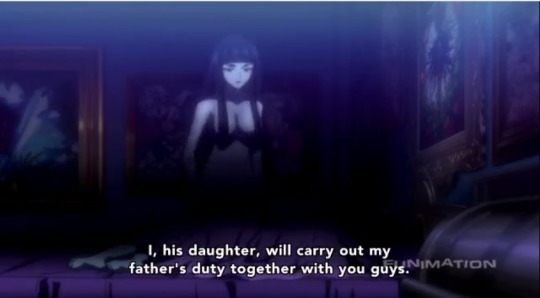


Makishima in his house having a conversation with his guest. They talked about the benefits of stress before psycho-pass check was introduced. "For some time, it's been understood that moderate stress has beneficial effects. For example, it stimulates the immune system. As they say, it's a motivation in your life. You can even call it a reason for living. However, once Psycho-pass checks became routine, people have found their sense of stress numbed so much that patients who can't even recognize stimulation itself started appearing. Once that happens, they're the same as living corpses. Soon their autonomic nervous system stops functioning on its own and their vital functions shut down."

Makishima continued to point out Ouryou Rikako's father also suffered from eustress deficiency and discussed his works. "He was a genius in drawing cruel, vivid nightmares using girls' bodies as motifs. However, he himself was a man of quite strict morality. Well, it's not uncommon for there to be a disconnect between the creator and the impression their creations give. But in Rouichi's case, there was a firm ideology there. According to him, by becoming firmly aware of the cruelty that's hiding in the dark depths of the human heart, humans can foster the common sense, ability to reason, and goodwill that can control that cruelty. He defined his creation activities as enlightening people about that. However, the spread of psycho-pass assessments ended this role that he had decided for himself. People don't have to control themselves anymore. Instead, they can now maintain their mental health through machine assessments. I heard...that Rouichi welcomed this technology. Whatever the means was, his ideals of humans having a healthy and sound mind has been realized. As a result, though, his mission had ended and his life lost its meaning."
He became addicted to the stress care technology. "As a result, he became a living corpse who couldn't even sit up on the bed, huh?" Makishima's guest pondered.
"It's as if Ouryou Rouichi was killed twice. First, his talent was killed by science and technology. And then, his soul was killed by society."

"I hope she finds some meaning beyond revenge, though."
While Makishima and his guest made this long conversation about Ouryou Rouichi and Ouryou Rikako, the music played in the background was identified as Beethoven's 9th symphony - Ode to Joy. And there is this entry at Wikipedia describing this music as a protest anthem through the years.
Ouryou Rikako called Choe Gu-Sung. Then she packed and went to what appeared to be a lab and entered. She started creating her third artwork with Yoshika's body.

The second artwork was found in a park.
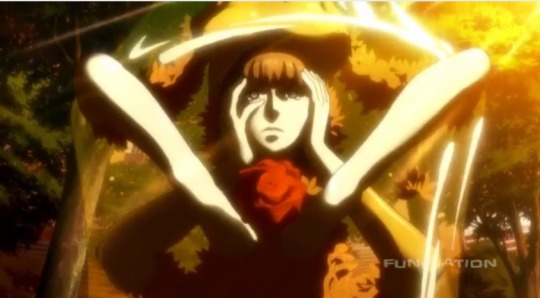
Ouryou Rikako was painting as Kawarazaki Kagami asked her about Okubo Yoshika. Kawarazaki walked over to Ouryou and saw her painting
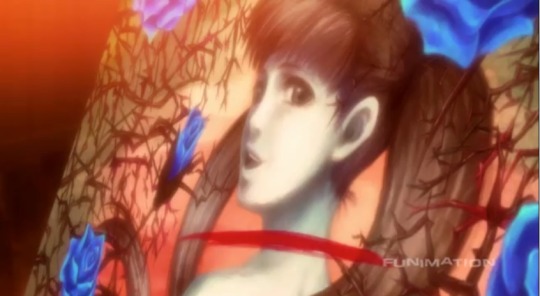
Ouryou stood up saying

And she injected something to Kawarazaki

The girl instantly collapsed to the floor.
When Kawarazaki came to, she found herself tied up and gagged, lying on the floor facing the naked body of Okubo Yoshika in a glass container filled with chemicals.
Ouryou appeared behind her. "A touching reunion with your childhood friend. It's an emotionally stirring scene, isn't it? It really makes me cry. I want to reenact this moving scene in a place more and more people can see it. Having such thoughts may indeed be the fate of an artist. "
A desperate gagged scream.
End of episode 7.
Episode 8 - And then, silence
Makishima and Ouryou Rikako talked about the targets she chose, the education policy at Oso Academy and where Ouryou would display her artwork next.
The agents were gathering evidence at Oso academy.
Tsunemori and Kogami discussed their take on the spiecemen case and the artwork case. Tsunemori thought the culprit would be the same person but Kogami thought otherwise. Kogami explained that in the spiecemen case, the victims's bodies were dismembered in ways to convey messages, and the locations they were found varied. But this time, both bodies were found in a park. The setup is boring.

Kogami concluded that they lacked something critical: originality.

"To Toma Kouzaburo, murdering people was just about preparing materials. Up to that point, it's the same in the current murder case. But from that point, the ways they worked on the bodies are totally different. I get a totally different picture of the culprit. He's highly intelligent and is assigned to a job with a high income by Sibyl's judgment. But he's quite young, or he's someone whose mental age is young. Considering the bodies didn't show many indignities of a sexual nature, we can guess that he wasn't abused as a child." Kogami ended his profiling of the culprit and then requested to go out, Tsunemori said she would have to come along.
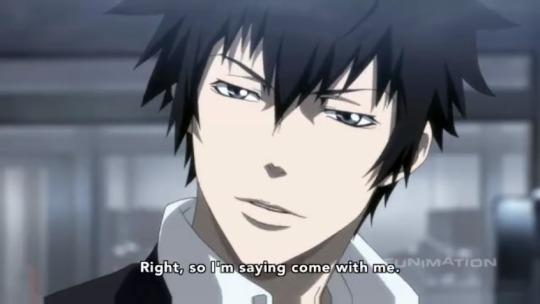
Kogami and Tsunemori headed to Tokorozawa Correction and Rehabilitation Center (所沢矯正保謢センタ-) to talk to an artist inmate. He showed the inmate photos of recent artworks. The inmate commented that they looked like works done by Ouryou Rouichi. The two agents had no clue who Ouryou Rouichi was. The inmate showed them one of the artwork by Ouryou Rouichi that he had in his collection.
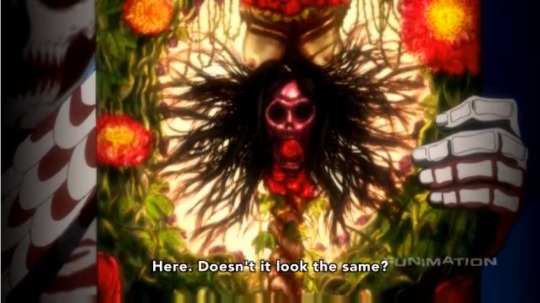
And added that they sold for good money because they contained firm fundamental themes.
Kogami thanked the inmate for his help and turned to Tsunemori, asking if the name Ouryou brought up anything. Tsunemori found that a student at Oso academy had the same family name.

Kogami headed straight to the Oso Academy, located Ouryou and pointed a dominator at her.

The teacher who tagged along Kogami tried to stop him from firing and Ouryou seized the opportunity to run. She escaped.
The agents inspected Ouryou's drawings. Kagami's friend saw it and identified her friend.

The agents gathered at the control room, checking footages to locate Ouryou Rikako. Ginoza asked how Kogami found out about this suspect. "The culprit this time decided where to exhibit bodies based solely on whether or not it catches people's attention."

The retrieval of footage with Ouryou Rikako done, and Kogami spotted one image of the girl that was on her own, unaccompanied by others.

After hearing the reply that the camera was at the garbage disposal facility behind the dorm, Kogami headed to that location immediately. The other agents followed him.
It was completely dark inside. Then someone switched the lights on and they saw another artwork.

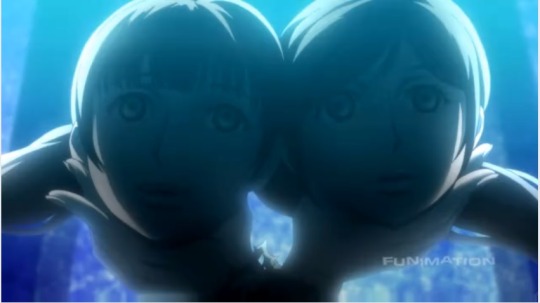
In the teacher's room, Makishima replayed the recording of Kogami's deduction and was impressed. Makishima's colleague approached, addressed him as Mr. Shibata, and asked if he was interested in music as well. Another colleague rushed in and told everyone in the room that students' bodies were found. Everyone ran out of the room, leaving Makishima alone. He tempered with the CCTV recordings.
Kogami realized it. Yet he managed to reconstruct the audio part of the damaged footage.
Ouryou was still on the run. She asked Choe Gu-sung if the route she was on was the right one. No reply. She looked back, and found no one. Then she got a call from Makishima. "Just in case, I'd like to ask you a question before this is all over. Ouryou Rikako, do you yourself realize how you came to disappoint me? " Ouryou had no clue. "Well...if you don't realize it, then I guess you can't even reflect on it. As I suspected, it seems that I can't expect any more growth from you. It's unfortunate. At first, I thought you had a bright future. " Ouryou asked what Makishima meant by that. "I think this is a line by Tamora, the Queen of Goths. 'So should I rob my sweet sons of their fee. No, let them satisfy their lust on thee.'" Ouryou's mobile phone network died.

"'The hunt is up, the morn is bright and grey. The fields are fragrant and the woods are green. Uncouple here and let us make a bay.'" Makishima continued quoting the Queen of Goths.
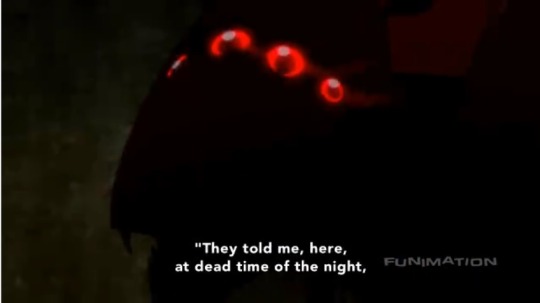
"'They told me, here, at dead time of the night, a thousand fiends, a thousand hissing snakes, ten thousand swelling toads, as many urchins, would make sure fearful and confused cries.'"
Ouryou hid in the dark, relieved at the sight that the thing (electric hound) walked past without noticing her. She stepped right into a trap.
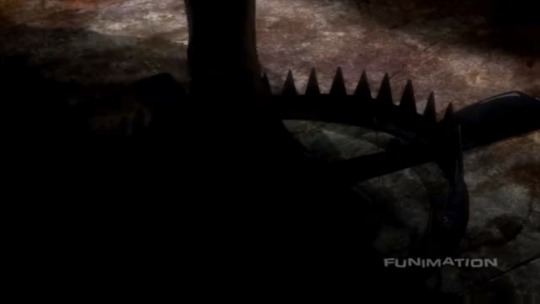

"'Listen, fair madam: let it be your glory to see her tears; but be your heart to them as unrelenting flint to drops of rain.'"
Rikako tapped open her father's photo on her phone. An electric hound found her.

"'So, now go tell, and if thy tongue can speak, who 'twas that cut thy tongue and ravish'd thee. Write down thy mind, bewray thy meaning so. And if thy stumps will let thee play the scribe.'"
As Ouryou was being pursued and injured by the hound, Makishima's guest hummed the tune of Ode to Joy.
Makishima's guest appeared in front of Ouryou Rikako

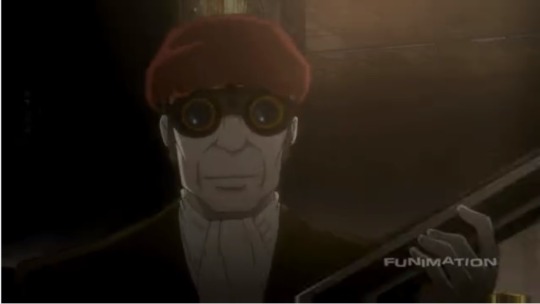

The man said coldly that "you don't have to worry about that." Then he fired.
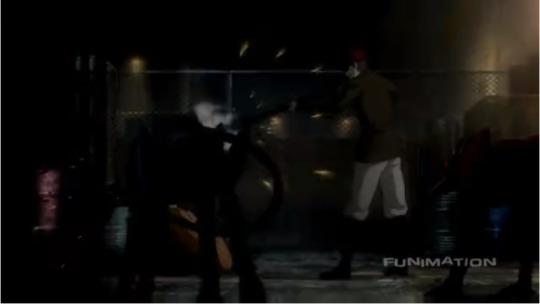
After Rikako died, Makishima made a request that information about Kogami be gathered, adding that Kogami's insight and ability to grasp were quite interesting.
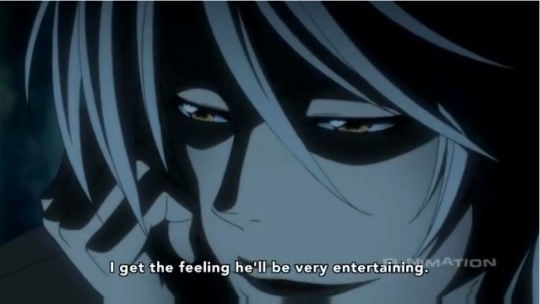
End of episode 8.
Comment: Episode seven: It seems Makishima's view was that the technology had become all-encompassing in every aspect of human life that humans no longer have to make decisions on their own, that since everything had been taken care of, humans got reduced to living things only. And he wanted to rebel against that system, he wanted to see how humans cope without that system, maybe that's why Ode to Joy was used as the background music when Makishima made that long speech about Ouryou Rouichi's art and how he lost his life's meaning to science and technology.
Episode eight: Makishima spent a great part of episode eight quoting Tamora, a villain from Shakespeare's Titus Androinicus. I googled and found that this villain was very consumed with the thought to revenge against Titus Abdroinicus, the general who captured her. And she made elaborate plans to carry out her revenge on everyone mattered to Titus. So it seems a major theme on Makishima's mind was revenge. And as with Mido, when Makishima got bored with Rikako, he discarded her without mercy. And he's guest, a hunter with two electric hounds, hunted Rikako down, injured her, and then killed her with a shot to the head. Merciless, manipulative, vengeful, with utter disregard of life, such are the components of Makishima's personality.
0 notes
Text
6 SHORT STORIES BLOGS
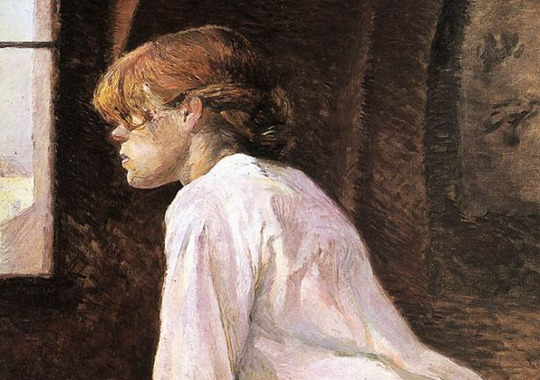
Eveline by James Joyce
Eveline was a nineteen-year-old woman who had an abusive father. Her mother passed away. Eveline dreamed of having a happy life, that she plans to escape form her father’s vision. For then to sustain their everyday needs, she worked for numerous stores to gain profit. One day, he met Frank, that loved her so much.
He wants to move with Eveline to Buenos Aires. As they were ready to leave and set sail that night, Eveline had a calling not to leave her family. It’s like she will also leave her mother’s memories and forget them.
The main point of the story we should know is that there are memories that we shouldn’t let go, and there are some that needs to be buried for us to forget what traumatic scenarios happened there. Memories with our loved ones.
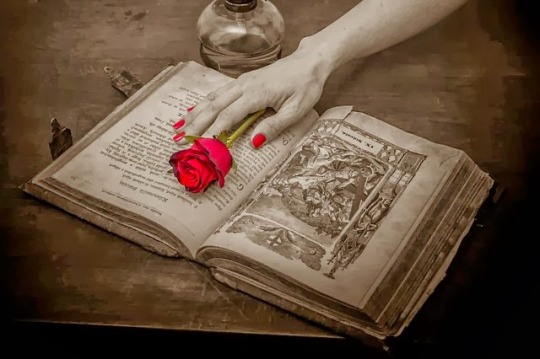
A Rose for Emily by William Faulkner
"A Rose for Emily" is a short story by William Faulkner that exemplifies the Southern gothic genre. Grierson’s funeral is attended by everyone in the town. She was a relic for other and spent her life isolated from the community. Her father prevented her from socializing with people so she has little to no peers. After her death, there was this guy named Homer Barron, a low-class Northerner who visited her frequently. There were rumors that they were engaged.
The townsmen roamed around Emily’s house and found a man’s skeleton under her bed. It was believed that it’s Homer’s. He left Emily for almost thirty years – no communication, no information, no presence at all!
Once a person fell in love with someone, it will do anything and everything for it. Emily’s longing and waiting for Homer showed how she really liked and loved the person.

A question of Dowry by Siew Yue Killingley
Dowry is a kind of present which is jewelry or amount of money that given by the bride’s family to the groom in their engagement ceremony.
In the story, a girl named Sivasothie is going to engage with a doctor named Thirulchelvam. Sisothie’s family is going to give her a necklace and 20,000 dollars to the groom as dowry. But the problem occurred that the land they are going to sell is a swamp and sodden land which has no value at all so they can’t sell the land to get the money. Sivasothie’s father, Mr. Ramachandran decided to tell the truth to Thirulchelvam. In the end, Thierulchelvam rejected the engagement because he can’t get the dowry.
You can’t marry a person that you don’t love. But, there are some instances that culture was involved for this practices of fixed marriage by families. Dowry has something to do with both parties. It serves as an offering to the family.

The Mask of the Red Death by Edgar Allan Poe
A disease known as the Red Death plagues the fictional country where this tale is set, and it causes its victims to die quickly and gruesomely. Even though this disease is spreading rampantly, the prince, Prospero, feels happy and hopeful. After few months, Prospero threw a masquerade ball. There were rooms that had different motifs. A room had a black-red theme that the guests avoided it because of its ambience.
Midnight comes, a strange and creepy person appeared on the ball. Prospero approached the dark-robed person and then suddenly, Prospero died. The partygoers attacked the person under the shroud and found out that there was nothing under it. All of the guests at the castle died. The plague scattered. “Darkness and Decay and the Red Death” have at last triumphed.
We should not trust with our guts at all times. For every group, there is still an opposing villain.

The Handsomest Drowned Man in the World by Gabriel García Márquez
In a small village, a group of children are playing at the seashore. They found a body that was covered with seaweeds, stones, and dead sea creature. A woman approached to it and checked the body. They said that the man was the handsomest person they had seen in their life. they also said that the body found was huge, that seven boats was needed for his body to fit in. They claimed that his name was Esteban. They prepared a funeral for him.
From that event, their village changed. There were flowers that started to bloom, fragrant scents are everywhere and colorful surroundings emerged for the sailors.
There’s nothing wrong for change. The only permanent thing that we can see in this world is change. It is also good for us to be different among others to stand out and be a game changer.

The Piece of String by Guy de Maupassant
Maitre Hauchecorne is falsely accused of having stolen a man's pocketbook. He explains that he merely bent down to pick up a piece of string, but no one believes him—not even after the pocketbook is found and returned.
One day, Hauchecorne saw a string and pulled it, but his enemy, Malandain, saw him doing this. When a peasant claims ot have been robbed, Mandalain pointed Hauchecorne. When the lost pocketbook was found beside of the road, the villagers still think that Hauchecorne is a culprit even though he proved his innocence. Hauchecorne realizes that his reputation as a crafty old man has turned the villagers against him. He can't convince them of his innocence. He dies repeating, "A little bit of string."
Accusing people about something without proof makes the person loose his dignity and stance. We can learn from here that we should think first before we act. A simple act can be a huge impact for everyone.
0 notes
Photo
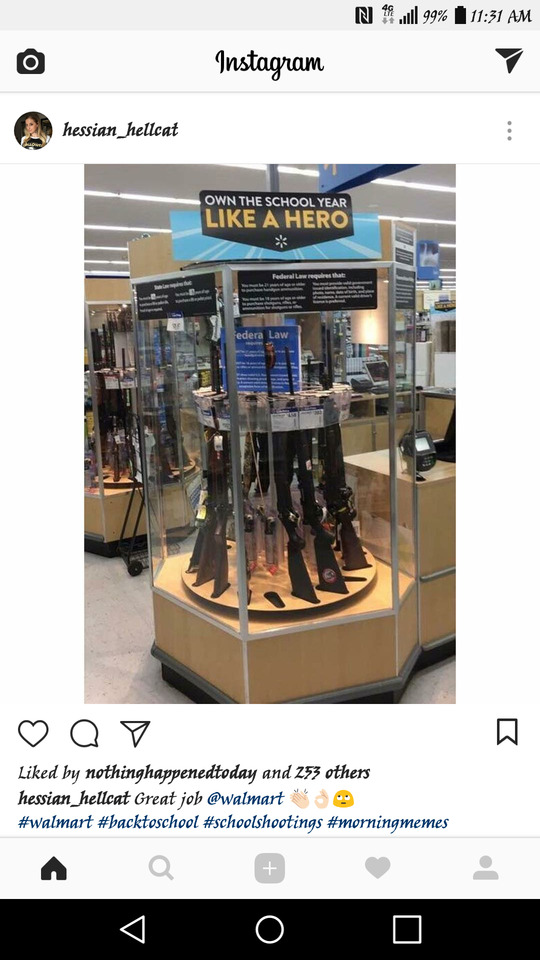
Advertisement done WRONG. Memes are great. Here's some .edu Info from 2007 On theories of media: The University of Chicago :: Theories of Media :: Keywords Glossary :: meme Works Cited 1. McGrath, Alister. 2005. Dawkins’ God: Genes, Memes, and the Meaning of Life. Malden: Blackwell Publishing. 2. “Meme.” Draft revision June 2001. The Oxford English Dictionary. Oxford University Press. http://dictionary.oed.com/cgi/entry/ 00305506? 3. Dawkins, Richard. 1976. (1989 edition copyright Richard Dawkins.) The Selfish Gene. Oxford University Press. 4. Dawkins, Richard. “Viruses of the Mind.” 1991. http://www.cscs.umich.edu/~crshalizi /Dawkins/viruses-of-the-mind.html 5. Leiber, Fritz. "Rump-Titty-Titty-Tum-TAH-Tee." The Best of Fritz Leiber. Sidgewick & Jackson, 1974. 6. Mitchell, W.J.T. 2003. “The Work of Art in the Age of Biocybernetic Reproduction.” Modernism/modernity. Vol. 10, no. 3. pp. 481-500. Johns Hopkins University Press. 7. Blackmore, Susan. Preface by Richard Dawkins. 1999. The Meme Machine. New York: Oxford University Press. Notes meme The concept of a reproducible element of culture has deep roots, and the transliteration of a word for it from a Greek root seems to have occurred on multiple independent occasions. Donald T. Campbell introduced the term “mnemone” for such an element in 1960. [1] Still, the word “meme” entered common usage only recently, with Richard Dawkins’ treatment of the word, and did not appear in the 1989 Second Edition of the Oxford English Dictionary. The online OED defines a meme as “A cultural element or behavioural trait whose transmission and consequent persistence in a population, although occurring by non-genetic means (esp. imitation), is considered as analogous to the inheritance of a gene.” [2] This entry tracks the word only as far back as Dawkins and The Selfish Gene in 1976. In this book, Dawkins himself claims to invent the word and dictate its use and pronunciation. His etymology of the word comes not from the same Greek root as Mnemosyne, the embodiment of memory and mother of the muses, but from “mimeme,” or something that is imitated. [3] “We need a name for the new replicator, a noun which conveys the idea of a unit of cultural transmission, or a unit of imitation. ‘Mimeme’ comes from a suitable Greek root, but I want a monosyllable that sounds a bit like ‘gene’. I hope my classicist friends will forgive me if I abbreviate mimeme to meme... It should be pronounced to rhyme with ‘cream’. Examples of memes are tunes, ideas, catch-phrases, clothes fashions, ways of making pots or of building arches.” [3] Dawkins would subsequently become indelibly associated with the meme, and his opinions and statements on the state of the theory would be used by many as the most important gauge of the theory’s health. Nevertheless, memetics does not begin and end with him. The need of a word for the meme existed before The Selfish Gene and has only increased since. For the whole history of human culture, traditions have been inherited and thought has been given to how they may be faithfully inherited and how they can change. Efficient, prolific, and faithful means of mechanical reproduction created an environment where culture could behave much like a gene pool and abstract cultural elements could be more easily personified. Currently, the need for a vocabulary to discuss memetics partially owes to the fields of cybernetics and “biocybernetics,” which study the mingling of life and artifice on a broader scale and could be said to encompass memetics. W.J.T. Mitchell’s “The Work of Art in the Age of Biocybernetic Reproduction” characterizes the emerging cybernetic sphere in a way that not only allows for the inclusion of memetics, but strongly implies it: “within the very heart of the cybernetic the bios rears its head in very concrete forms – most conspicuously in the computational virus, but also in subtler forms… It’s not simply that living things become more like machines, but that machines now more than ever behave like living things.” [6] The analysis of non-living and culture-based phenomena in biological terms is a practice that goes beyond memetics, and a media student may do well to find connections between purely informational and material cybernetics. Because the analogy with the gene is part of the definition of the meme, it is presumable that, just as a creature has no control over its own genome, and just as a prospective parent may not be aware of the genetic disorders being passed to the child, memes can be given and received involuntarily. Dawkins notes in “Viruses of the Mind” that hardly anyone consciously admits to being affected by an advertisement, but businesses continue to invest in advertising and continue to observe its desired effects taking place. [4] Of course not everything transmitted through a medium is consciously received; more interesting to the media student is the possibility of a completely unconscious sending of a meme through a medium. Although it is only implied in The Selfish Gene, Dawkins would later expressly characterize some pieces of self-replicating memetic information as “Viruses of the Mind” in his controversial essay of the same name. [3] By doing so, he connects memetics to the ancient motif of harmful sensation. Harmful sensations, both real and imagined, are diverse in the means by which they cause harm but united in their phobic message that curiosity can be taken to excess and that the prospective targets of media are lucky to be ignorant. Memes notwithstanding, harmful sensations either cause direct harm with their medium rather than its independent message, (such as a mythical killing gaze or David Cronenberg’s Videodrome signal,) or else they carry messages that are harmful for the states of mind they induce or the terrible truths they reveal (such as the fruit of Genesis or H.P. Lovecraft’s “Cthulhu mythos”). In either case, the message is either an inconsequential decoration of the medium or a lifeless weapon to be exploited by others. However, if a sensation is harmful because it carries a virulent meme, then the message becomes a personified enemy and the medium becomes a non-essential, replaceable weapon. The prospect of a cultural virus is even more terrifying than the simple killing gaze of a gorgon or basilisk, because overly fatal units of information would limit their own ability to spread. The most frightening meme, like the deadliest virus, gives the host time to infect others. From this perspective, exposure to media can become a threat to the integrity of the self or destroy the feeble boundaries of the self entirely. Also, the reversal of importance in the medium-message relationship and the personification of the message create concerns in the areas of ethics, authorship, and intellectual property. Words like “culprit,” “aggressor,” “author,” and even “victim” struggle to keep their meanings when malicious information is perceived as evolving and self-disseminating. The study of self-replicating pieces of information is divided among the triad of genetics, computer science, and cultural studies. Parallels have been drawn between each pair, though all three are not completely alike. In “Viruses of the Mind,” Dawkins sets cultural and digital media together as he compares faiths and other virulent memes to computer viruses. “Any cynic familiar with the theory of selfish genes and memes would have known that modern personal computers, with their promiscuous traffic of floppy discs and e-mail links, were just asking for trouble. The only surprising thing about the current epidemic of computer viruses is that it has been so long in coming.” [4] From the perspective of media studies, it is worth observing that treatments of memetics often assume that memes are medium-neutral. Perhaps deceptively, it stands to reason that an ideology read from a book can be the same meme as an ideology passed on orally or spread through comic-book tracts [http://www.chick.com]. The perception that “self-interested” units of culture can wind through any media to find their hosts openly defies the appeals to medium specificity made by media theorists such as Clement Greenberg. To extend the comparison with genetics, media would be the sex organs by which memes are propagated to bury their seed in new minds. Even so, memes can clearly influence the way individuals relate to media, just as genes determine the traits of a creature’s sex organs. An alternative, somewhat conflicting way to compare memes with their media is to imagine media as the ever-changing environments in which memes compete for the means they need to survive and reproduce. Are memes at an evolutionary disadvantage when they switch media, as the proponents of medium specificity would predict, or might they grow out of control like a foreign species in a new ecological environment? Memes are often thought of as dependent on verbal media for propagation, or at least as dependent on interpersonal experience that includes articulated information. To complicate the matter, completely nonverbal or inarticulable memes are likely much more difficult to track. However, speculation exists on the subject, such as Fritz Leiber’s short story "Rump-Titty-Titty-Tum-TAH- Tee" about a cadence coupled with an image that are so “catchy” or memetically fit that they spread across the human population and severely hamper humanity’s ability to do anything but reproduce them.[5] It may even be even possible for a meme to transcend the rift between word and image, conveying its memetic material on a frightening variety of fronts. Some empirically minded or reactionary followers of media studies ask whether memes can be said to exist at all, and the multitude of manners and moods in which the word is used brings its practicality into question. Alister McGrath argues that “Dawkins talking about memes is like believers talking about God – an invisible, unverifiable postulate, which helps explain some things about experience, but ultimately lies beyond material investigation.” [1] Even the postulate, he argues, is vague and unnecessary compared to the foundationally solid and scientific theory of the gene to which the meme’s definition is bound. He says that “perhaps the most significant criticism of the ‘meme’ concept is that the study of cultural and intellectual development proceeds perfectly well without it. Economic and physical models – especially information transfer – have proved their worth in this context.” [1] Upon merely mentioning the meme as a unit or entity, the cultural or media theorist has to defend against criticisms and alternate models such as these. Another concern about memetics is that the inheritance of memes seems to be “Lamarckian,” meaning that changes acquired during the lifetime of a meme are inherited by its progeny. This model of evolution, named after Jean-Baptiste de Lamarck, has long been widely dismissed as a terrible model of biological evolution, and some definitions of “evolution” specifically include the presence of a non-Lamarckian environment. [7] The observation that memes change their hosts’ experiences endangers the very definition of the meme, if we use the Oxford definition that includes analogy to biological evolution. Whether memes can truly involve in a Lamarckian environment, and even whether memes always follow the Lamarckian pattern, remains in question. The fidelity of media is another issue in memetics, because the question of identity between memes is not as clear-cut as that of identity between genes. Dawkins himself admits that the meme cannot be currently located or isolated, and this makes the distinction between memes somewhat slippery and unscientific: “Another objection is that we don’t know what memes are made of, or where they reside. Memes have not yet found their Watson and Crick; they even lack their Mendel.” [7] Susan Blackmore puts it more elegantly, “Is Beethoven’s Fifth Symphony a meme, or only the first four notes?” [7] Can two memes propagated through different media be identical? What separates a “mutated” meme from an entirely different meme? Could one ever decode a complete human memome? Genes are, so to speak, digital, while culture is the intangible analog that instills the genetic frame with infinite individuality. As a word with a specific, recorded, recent origin, it is simpler to trace the totality of attitudes and analyses of “meme” than much of the vocabulary of media studies. The general question that encompasses the debate and criticism around the word is not “What should its meaning be?” but rather “Can the theory behind this word fruitfully describe the real behavior of culture?” Compared to most areas of media theory, memetics remains in a crisis that is unusually immediate, strongly linked to the empirical sciences, and potentially terminal. Bill Volk Winter 2007 The University of Chicago :: Theories of Media :: Keywords Glossary :: meme http://csmt.uchicago.edu/glossary2004/meme.htm
1 note
·
View note
Photo

NDRV3: Kodaka Kazutaka and Kanda Sayaka Hold Nothing Back! The Dangan Inside Story
So this is an interview with Kodaka and Kanda Sayaka about V3 that was offered as a bonus for finishing the V3 character poll. Thanks to @bamboo-woods for the heads up about the poll and the interview tokuten! Enjoy!
New Dangan Ronpa V3, released on January 12th for the PS Vita and PS4, is the newest installment in the Dangan Ronpa series, known and loved for its high speed reasoning action to expose inconsistencies in your opponents' arguments and find the murder culprit. This time Dangan Ronpa and My Navi News team up to bring you a special interview with Kanda Sayaka, the voice of V3's protagonist Akamatsu Kaede, and Kodaka Kazutaka, the series creator and scenario writer.
This is the first time the two have chatted! On top of that, the interview took place the day before the game went on sale, January 11th. Kanda-san had only played Chapter 1 by that point, and therefore did not know any of the later developments, but she talks about the newest installment at length! Also, pay attention to how she interacts with the deceptive Kodaka-san.
This interview discusses major spoilers from the first chapter of the game, so we recommend completing at least the first chapter before reading.
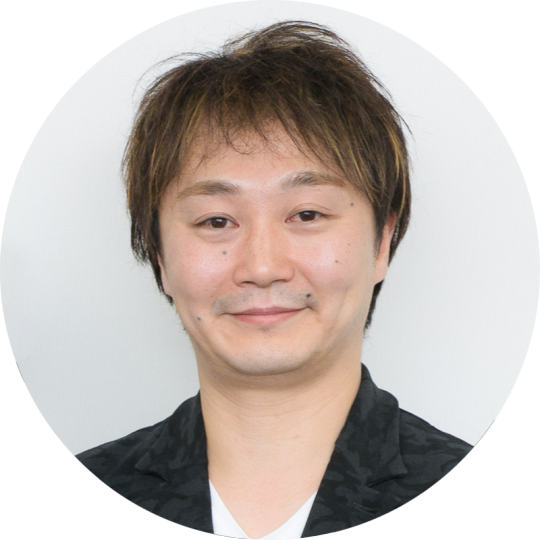
Kodaka Kazutaka Profile: Born July 8th, 1978 in Tokyo. Game developer. Creator and scenario writer of the Dangan Ronpa series. Works for Spike Chunsoft.

Kanda Sayaka Profile: Born October 1, 1986 in Tokyo. Made her debut in 2001 as part of a show biz commercial. Released her first single as a singer, “ever since”, in 2002. In 2003, after appearing in “Into the Woods”, she focused on playing various characters on stage. She was widely praised for her job in the role of Enoshima Junko in 2014's Dangan Ronpa the Stage. She was also awarded the 9th Voice Actor award for Best Actress in 2014 for playing Anna in the Japanese dub of Frozen.
Next page: You didn't know you were playing the protagonist?!
You didn't know you were the protagonist at first?!
This is a talk about New Dangan Ronpa V3, but we have already warned reader that there will be spoilers, so please feel free to discuss things that would have been difficult to talk about in other interviews!
Kanda: All right! Giving comments at the commemorative release date event the day before the game came out was really tough.
So, first off, the it's a very sudden, shocking development that the protagonist you play, Akamatsu Kaede, turns out to be the culprit of the first chapter.

Kanda: Wow, this sure is fresh.
Kodaka: But it's probably a good thing to touch on it, otherwise we'll spend the entire time playing dumb and there won't be much to get out of the interview.
Kanda-san, when you read this scenario, how did you feel?
Kanda: We had talked about me voicing a new character, but I knew from the start that she was going to die in Chapter 1, haha. Since I heard that, I was wondering what kind of position she'd play in the game, and I earnestly asked them to let me take the role. And it turned out she was a protagonist of all things. I found that out much later. My manager might have known about it, but I was unaware that I was the protagonist...
When the main visual was unveiled during the announcement back in December of 2015, Akamatsu Kaede was not featured. At that point in time was the story already decided?

Kodaka: We had a prototype. As a result, at that stage I had already thought of having the protagonist Akamatsu Kaede die. It's easy to have the protagonist become a victim, but instead I had the idea to try and employ a trick to make the protagonist the culprit instead. I thought it would be difficult, but if I could pull it off, I definitely wanted to.
Kanda-san, you had a tough role to play, so was there anything in particular you had to be careful of while acting?
Kanda: It was less that I was doing my best not to be excited, but more that I took care to act as if my character wasn't going to die. I tried to not raise death flags, to seem inexperienced with everything. I played the part trying to keep in mind the tone of protagonists past.
Kodaka: We actually just redid Chapter 1 yesterday, but that inexperienced feeling was great. I thought to myself “You know what? We could just keep it like this.” Even in the days of the first Dangan Ronpa game, despite that Maizono Sayaka dies right away in the actual story, she acts as a Watson to Naegi in the demo. At that time too, I felt that we could have just kept things that way, and I had a similar thought to just do our best with Akamatsu this time too.
((Jess: I will have words to say about this later, don't you worry.))
What was wanted was a self-assertive voice
Once again, why was Kanda Sayaka-san appointed to the role of Akamatsu Kaede?

Kodaka: That's a long story.
Kanda: It's basically just because I wanted to play the role, haha.
Kodaka: There are countless reasons, but one is because we couldn't just use a normal voice actor to follow up Ogata Megumi in 1 and Takayama Minami in 2. No matter who played the role, those two are just so influential and legendary that if we didn't change things up a bit, it wouldn't have gone well.
On top of that, Kanda-san would have to be my accomplice, pretending to have been playing Akamtasu Kaede as the protagonist all this time. Someone to help me fool the players. If it were someone new to the Dangan Ronpa franchise, it would have been hard to collaborate and work together like this. Because Kanda-san had played Enoshima Junko perfectly in the stage adaptation, and because I wanted to try working with her, I couldn't think of anyone else to ask.
Meanwhile, on the acting side of things, Kanda-san was praised widely for her expressions and gestures while playing Enoshima, but I was intrigued by her voice, and I wondered if she could play the Akamatsu role. Kanda-san's voice is self-assertive in a good way, so I wanted her to act using her own voice. It was less a matter of who could play the role most skillfully, and more that I wanted someone who could really put herself into the role of the protagonist.
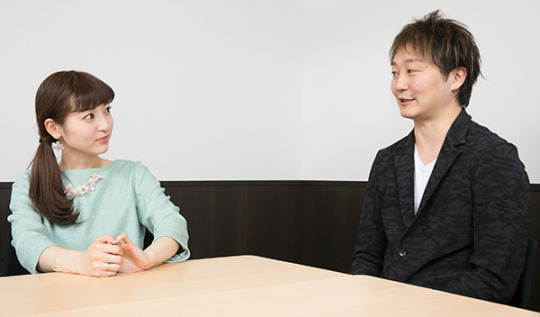
Kanda-san, did you get this impression when they approached you for the role?
Kanda: Yes. I thought I should play the part cutely when I saw the visual so I used a voice that was a bit higher pitched than normal, but I was asked to speak “a bit more normally” and I realized they were looking for something closer to my natural speaking voice.
Kodaka: It's because I wanted to bring out the charmingness of “Kanda Sayaka-san's voice”. Looking back at the finished product, I'd say we hit the mark.
So there wasn't much of a difference between the Akamatsu you initially conceived and the one Kanda-san played.
Kodaka: When it came to Akamtasu, I wasn't a stickler about how I wanted everything done, I thought that a mix between what I thought and Kanda-san would be good. Because Akamtasu was the protagonist, I wanted a character who couldn't exist unless Kanda-san was involved, and so because of that I couldn't say too much or it would interfere with how the character coalesced.
Kanda: Yeah, you didn't say anything to me, did you.
Kodaka: The hard part was recording starting with the trial, wasn't it?
Kanda: I did a little bit of the pre-trial part before. Then after all the emotions came out during the trial section, we went back to the beginning.
Kodaka: Because the trials are serious, a lot of voice actors complain that it's difficult to come in and do them first.
Kanda: Really?! It was so amazing that I enjoyed it!
Kodaka: Kanda-san, to sum up what you’re especially good at in a few words: your voice. When you first start the trial, your voice is still really cute.
Then as the trial goes on, it gets steadily heavier. I'm really happy with the result. It isn't just adding weight—it's different than just throwing in a scream. You were Akamatsu Kaede until the very end.
Kanda: Well, surprisingly, I might have been more matter-of-fact about it than philosophical.
Kodaka: The seriousness of murder and the culprits coming to terms with being murderers is a motif in Dangan Ronpa. But in Akamatsu's case, it's a bit different, since she did it in order to protect everyone, so she didn't have the usual desperate panicking a culprit does. I left it up to you to tackle this never-before-seen pattern.
Next page: The one who is sick is Akamatsu? The environment? Kodaka?!
The one who's sick is Akamatsu? The environment? Kodaka?!
Of course one of the special features this time is that the protagonist is a character with a strong sense of justice. Kanda-san, what about Akamatasu did you sympathize with, and was there anything about her you couldn't sympathize with?

Kanda: Up until now in interviews I've said Akamatsu has a strong sense of justice and is very straightforward as The Protagonist, and while she does certainly have those sides, I don't know that I'd call her a good person, haha. Though since she doesn't think she's wrong, there's no ulterior meaning behind her words.
Because she believes what she thinks is right and just, she goes a bit crazy when her belief that “there's no way this is wrong” turns out to be mistaken. I think that's great. It's not that she's psychotic, but more that she never doubts that what she thinks is just. Did I get it right?
Kodaka: That's true. But I'd say that the madness is less Akamatsu's fault and more that of the environment. I can't even imagine being put in a situation like that. If I were ever forced into a mutual killing game, I wonder what I'd do... So I thought that Akamatsu's actions would be unexpected. Since she's so proactive, I figured she'd go for it.
Kanda: No, no. I say that's sick.
Kodaka: Then I wonder if I'm sick, haha.
Kanda: Just a bit, haha. Akamatsu really does just accept them blindly, justice and unity.
Kodaka: Naturally, in Dangan Ronpa so far there haven't been many characters who truly wanted everyone to get out to this extent. There's been a lot of cases of murders happening because of people reaching their breaking points. ((Jess's Note: I THINK.)) Akamatsu this time is someone aiming to get everyone out, and there's that escape game where you can try to get out with everyone in Chapter 1 (Note: a mini game where you control the characters and try to reach the goal while avoiding traps. It's extremely difficult.)
Kanda: How far can you get in that?
Kodaka: If you try really hard, you can clear it. Maybe 1 person in 50 can. When the QA people play-tested it, only one of them was able to beat it. Ha, it's probably impossible at the start.
Their relationship as accomplices began before the game
Kodaka-san, when you were creating the character of Akamatsu, did you have any motifs or things you were referencing?

Kodaka: Not character-wise; rather, the trick came before everything else. Since I was using a description trick (a method of leading the reader to believe one thing by using their preconceived notions in order to elicit a shock after the mystery is solved) to allow the protagonist to become the culprit, I knew they were going to kill someone. In mysteries, the character who uses the description trick is often reviled because they trick the reader and the characters alike. In order to avoid that, I think it was necessary to have a character like Akamatsu who was acting for “the sake of everyone”.
Kanda: But until today I've been a huge liar...seriously.
Kodaka: What I thought was really horrible was how when you were speaking at events, it was difficult for you to answer questions.
Kanda: When I would tell people I was the protagonist, despite that it wasn't exactly untrue, it became harder for me to say it since it's so short-lived and I started to not want to say it at all...
I suppose seeing the results of the V3 Survival Prediction Poll from the Namjatown Event (the results were announced the day before release day, January 11th, with Harukawa Maki in first place, Saihara Shuuichi in second, and Akamatsu Kaede in third) must have really made you feel that all the more, Kanda-san.
Kanda: The worst for that has been the event today.
Kodaka: You had a look like “You're going to ask about that, huh” haha.
Kanda: At the start, when I was first chosen to play the character, because I had played Enoshima Junko-chan in the stage play, there were a lot of people who thought there was something fishy going on. But then in the demo Akamatsu was shown to be earnestly participating in the trial, and it seemed like everyone changed their minds to “oh, I guess this is how we're going to do it.” Seeing that, I was relieved that they'd been successfully deceived.

Kodaka: That's true. In the beginning it was not going well, huh. It was a hard game there for awhile, but the demo and the cut-in illustrations probably made a lot of people think it would go that way. In addition, Kanda-san doing so many interviews might have made people think that there was no way she'd die.
Kanda: It's because I kept saying “I'm the protagonist!” with a huge smile on my face...
Kodaka: That's one reason why you were cast for the role.
So you really were accomplices, huh.
Kodaka: I couldn't have done this with someone I'd just met. I thought this would be an interesting way to start a game. Kanda-san, who do you think will survive the game?
Kanda: The characters I chose at Namjatown were Saihara-kun, Maki-chan, Amami-kun, and Tenko-chan.

Kodaka: But...you knew about Amami.
Kanda: Yeah...
((I fucking love Kanda Sayaka.))
Kodaka: You just really wanted to put him in?
Kanda: No, it was a tough choice, the girls included.
Kodaka: But it really is a waste that we didn't get to use Midorikawa-san in the trial.
Kanda: It's true. It's really true!
Kodaka: So, there might be a chance he could show up...
Aside from inflating her hopes like that, I heard that the demo was a last minute decision.
Kodaka: That's right. It was in the latter half of development, right down to the wire. But since before then we had been acting as if we'd do one, I'm glad we did.
Was there ever a time during recording where you [Kanda-san] asked Kodaka-san “What is this?”
Kanda: I got explanations of the situations and the layout and so on. But since I understood from the beginning that vocal tone was supposed to be close to my natural way of speaking, and since I had played all the games up until this point, I mostly understood where the lines were heading. Thanks to that, I didn't have a lot I worried about or struggled with. It was nice to go from being a player who was lied to and deceived to being an accomplice, haha.
Kodaka: Dangan Ronpa mixes gags and serious moments and therefore is a difficult script. Because Kanda-san is well-acquainted with the series, she understood what was comic relief and what was serious, so she didn't need anything explained and it was quite easy.
Next page: “Soreha chigauyo” or “Soreha chigauwa”?
“Soreha chigauyo” or “Soreha chigauwa”?
Kanda-san, were there any lines Akamatsu said that left an impression on you while you were playing her?
Kanda: Definitely “That's wrong.” I found out I was playing the protagonist much later on. When I looked at the script and saw that line there, I said “I get to say 'soreha chigauyo!' I sound like a protag!” and they told me, “No, you are the protag.” That's how I found out. “Soreha chigauyo!” is just so perfectly Dangan Ronpa... That was the line I asked to be allowed to say more than once; it was the first time a girl had gotten to say it.
((Actually, Komaru does say it once to Fukawa in DR:AE, but it's under different circumstances so...))
Kodaka: Indeed. Having a woman say those words was one of the things we thought of.
Kanda: But you went ahead and kept it “soreha chigauyo” after all, huh. It would have left a strange impression if you'd changed it to “soreha chigauwa” because she's a girl. When I recorded that line, that was when I truly felt like I was participating. Also, I personally remember everyone speaking together for the line “This is our answer.” Since Hayashibara-san had recorded the line just before, she was able to act as a guide for us to match up with. Timing the recording along with Hayashibara-san's “3, 2, 1: This is our answer” made me so happy that I wished I could record it with my ears.

Kodaka: For me it's the hotel. There are some risque scenarios, but the truth is I didn't write them—a substitute did and I just edited them afterward.
Kanda: I figured it was your hobby, Kodaka-san, haha.
Kodaka: No way. Out of all of the voice actors, Kanda-san and Ishida Haruka-san, who played Iruma Miu, were the only ones I knew. Iruma had plenty of raunchy lines from the beginning so I wasn't worried about her, but for Akamatsu I drug my feet a little because it felt kind of gross making someone I knew say things like that. It really was extreme.
Kanda: Even though I was fine saying it! Haha
Kodaka: I still got embarrassed. I mean I was the one in the booth doing the direction. I was thinking that because of Akamatsu's personality, she shouldn't be inviting anything erotic. But in general, I think the part where she hands the baton off to Saihara at the end of Chapter 1 was extremely good.
Their impressions of one another...
I would like to ask about the first time you spoke to one another.
Kodaka: What impressed me about Kanda-san was that I presented myself as someone who likes to mess with people and get messed with, and she picked up on that extremely fast.
Kanda: Yeah, probably, haha.
Kodaka: I thought to myself that she's got a good eye for people, and it was like she could see right through me—it was scary!
Kanda: No no no no, haha.
When did you first meet?
Kodaka: At the announcement for the stage adaptation.
Kanda: Because to fans Kodaka-san is the creator of Dangan Ronpa and therefore a godlike figure, the first time I met him I was extremely reverent. My feelings were like “Ah, it's Kodaka-san!” and I even got his autograph, haha. It was a little frightening to have the creator see my acting on the first night and I wondered if it would be okay, but him coming on subsequent performances became comforting, to the point where I wanted him to come to every show. Of course this is the case for the games and the anime, but for the stage show too, he's really like the characters' papa.
During the run of the play, did you seek advice on how to play a character or anything?
Kanda: I did. It was mostly “How was that just now?”
Kodaka: But there was nothing I could say. I wracked my brain, but there wasn't anything. It was a big deal to the staff that way before Kanda-san wrote about Dangan Ronpa on her blog. Because the series wasn't well-known back then because it had just started, it left a deep impression on me. That was why I had asked her to be part of the stage play, but the moment I saw Kanda-san's Enoshima Junko, that was that. From the very start, I was surprised: “She's amazing!”
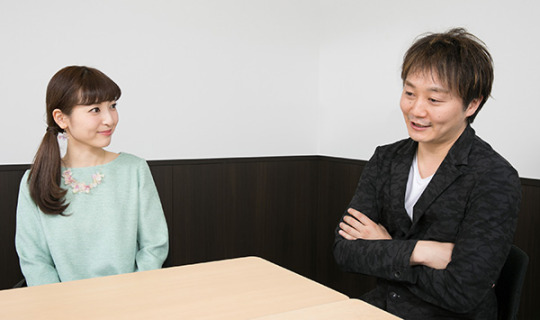
Kanda-san, you don't give off the impression of someone who works hard, but do you hide that side of yourself?
Kanda: Um, I think it'd probably be cool to answer with “Nah, that isn't true,” but when it came to Enoshima, I worked myself within an inch of my life. I'd never practiced that much in my entire career as an entertainer.
Kodaka: The first thing I saw was the dress rehearsal, or maybe the rehearsals before that, but I was surprised at how perfect it was from that moment on. Whether it was genius or hard work...heh, it's probably a bit of both.
Kanda: Knock it off. I used to wonder a lot if you weren't asking or saying anything to me because I was beyond help.
Kodaka: It's because especially the first showing of the stage play, Enoshima was the highlight, and everyone was already thinking “Enoshima! Enoshima!”
Kanda-san, was it difficult separating how you played Akamatsu, a new character, vs. when you played Enoshima?
Kanda: It was. I was already a big fan of Enoshima Junko-chan from the start. On top of that, since the Toyoguchi Megumi, the character's original voice, was also there, I thought a lot about how to make it seem like she just stepped out of the game. This time it was like doing that in reverse, finding a way to get a real person into a game.
Kodaka: This time I wanted to bring Kanda-san's voice to life. It was easy to make a character completely different from Enoshima, but even as I was thinking that I didn't want her to concentrate on it too much, I worried that she'd bring along a little bit of Enoshima to the role. However, when we tried it out, there wasn't a trace of that at all.
Kanda: You were working on the anime at the same time. Since Toyoguchi-san was playing Junko-chan in real time for the first time in a long time, you could use that as a reference to set her and Akamatsu apart.
Kodaka: Ah, but it was been a very long time since Toyoguchi-san had played Enoshima. Because of that, everyone was more used to Kanda-san's version, so during recording I got a little confused sometimes, thinking “Is this okay for Enoshima?” It's pretty rare that both of your performances are considered to be the real thing.
((I want to defend Toyoguchi-san's honor here, but Kanda Sayaka does play a mean Enoshima, I have to admit.))
Next page: The reaction to Akamatsu Kaede’s execution scene?!
Reaction to Akamatsu Kaede’s execution scene?!
Kodaka-san, what elements were you worried about or were not decided up until the very end?

Kodaka: The gameplay. I could write the scenario with no problem, but I couldn't decide about gameplay so it took a lot of work. It was a tough battle, trying to put in difficult tricks that had meaning and didn't bring down the story. This far and away took the most time. The anime was also happening simultaneously, but even taking that out it still took a long time. The first game probably took me about half a year to write, while the second took about eight months. This time it took a year and a half. Based on my experience with the first game, I figured it would take about six months, but then it just never ended... It was tough.
Kanda-san, looking back over this game having recorded for it and played it, what do you think is the most amazing thing about Kodaka-san?
Kanda: I always feel like I want to open up Kodaka-san's head and see what's inside. Normally he's like a low-key middle-aged man, haha, but then he comes up with the executions and I think, “So he can think of things this cruel, huh.” Honestly he's kind of scary, seeming like he has multiple faces like that.
Kodaka: Don’t I actually have multiple faces though? Haha. But that's just my front. Because I have a front like that, I'm able do those things.
Kanda: You're surprisingly naïve. It's like you have a glass heart.
Kodaka: I do have a glass heart, haha. So, how was Akamatsu's execution?
Kanda: I liked it. Loved it.
((That's my girl.))
Kodaka: In an interview, someone asked Kanda-san “If Akamtasu were to be executed, what kind of execution would you want her to have?” and she answered: “One that was over in a second.” When I saw that, all I could think was “What a liar...” haha. The article said that she didn't want a lingering death, but in the end that's what she got.

Kanda: It was like that because I knew. I think it was the best execution. I wouldn't want it to happen to me. Out of all the ones I've seen up until now, it's the one that I'd want the least.
Kodaka: There were a lot of people on our staff who didn't like it either. They'd only seen the execution for Chapter 1 and they asked me if the entire game was going to be this heavy.
Kanda: Despite how many executions have come before, this one is the nastiest. She's clearly suffering!
Kodaka: I'm glad we didn't record any lines for that scene. There weren't any lines in the execution scene to begin with, since if we recorded any, it probably would have ruined your throat, haha.
Kanda: Because of that, I didn't know about it when we were recording. The first time I saw the death was when I played the game for the first time. When I saw it, I couldn't help but think “Kodaka-san, you're so scary!”
How about future developments...
Kanda-san, you've acted in the stage play, done themes for the anime, and played a character in a game. Is there anything else you'd like to try?
Kanda: I actually never thought I'd continue to be this involved. More than anyone realizes, I started out as just a fan. Because of that, it feels a little bit like “how long will this Cinderella Story go?”
Being allowed to act in the stage show, sing themes for the anime, then play a character in the new game has let me meet Kodaka-san and the other creators multiple times, and I can feel their deep love for the Dangan Ronpa franchise. They speak about the characters as if they're living people.
This time I was able to be an accomplice to those people, and they showed me how interesting it is to be on the side setting up the tricks. My introduction to the series was through the games, and it's all come back around to a game. Though my involvement now is very different than how I started. Because of that, I'm happy to do anything at all for this series in the future. Somehow or other, I'd like to think that I've created a part of Dangan Ronpa within myself...is that okay?
Kodaka: Yes, of course!
This is a bit premature, but Kodaka-san, have you given any thought to what you'd like to do next?
Kodaka: Having the previous characters from 1 and 2 appear in anime form felt like reuniting with them, and for that I'm glad. The games are to a certain extent the true content of the series, and though there would be times when we’d fumble, making an anime of it means that more people will play the game, and so the actors had a strong desire to make something entertaining.
Kanda: An anime... I wonder how many episodes I'll get to be in, haha.
Kodaka: Ah, but there's an issue with making an anime adaptation. If people play the game to the end, I get the feeling that from now on even if I say “This is what I want to do,” they'll think it's a lie... There are people reading who are still playing the game and some who have finished, probably thinking “Huh, what are you talking about in that ending?” So it's really difficult.

The game doesn't have anything like a “This is how things end” part, right?!
Kodaka: Well, I'd like you to see that as included.
Kanda: Whaaaat?! What does that mean? Now I want to know.
Kodaka: But Hayashibara-san praised the ending. “Does Dangan Ronpa always end like this?” she asked. When I told her “Not always. This time I intentionally wanted to end it this way,” she applauded and praised me, haha.
Kanda: And when you thought of it, you did a triumphant pose?
Kodaka: No, my heart was pounding. It's still pounding. You’ll love it or hate it. There are likely going to be some people who don't like it. Ah, but there were some people who didn't like the game world from 2 either, so...
Kanda: So it leaves a bad taste in your mouth, most likely.
Kodaka: You’ll enjoy the aftertaste, probably. Well, actually I have no idea. I really want to hear your thoughts after you beat the game, Kanda-san.
Well. Color me intrigued...
So there you have it! Sorry this took so long to finish--my life is a never-ending series of obligations, haha. That said, it was fun to do a big translation again. If you spot any typos/errors, please give me a heads up, as always. See you guys soon with some FTE updates and a few other goodies.
よろしくな!
194 notes
·
View notes
Text
New DanganRonpa V3 full prediction
Having answer to @photoshopronpa‘s survey made me realize I already have a complete prediction for the entire game. Of course, I know that I’m not really that good at fortune-telling, so my chance of getting everything right pre-release is way below 20%. Still that prediction thing was lot of fun to make and I’m looking forward to hear your thoughts about it.
Here’s my prediction:

“Wait, 6 killers and 4 victims?”
“What the fuck, Shirogane mastermind?”
Yeah, I know that seems confusing, but don’t worry, everything will make sense once I lay out the story chapter by chapter. Here we go:
Chapter 1: Saihara kills Amami
Basis for Amami as the first victim: The first victim must always be someone portrayed as important. Amami seems to be presented as important as Maizono and as mysterious as Twogami. He gives us this false sense of security of believing he will not die before he remember his talent. Not to mention he is too suspicious to actually be a killer. I really don’t think I needed to explain this one, as lots of people agree on him as the first victim, but better safe than sorry.
Basis for Saihara as the first killer: We already know he is the first person Akamatsu meets and the one who introduces her to everyone, but this role was replaced by Naegi in the demo. The demo evidences points to Naegi and we know for a fact that the first Debate Scrum discusses whether or not Saihara is the killer. A point of interest in the demo is the lie tutorial: Akamatsu lies to create a fake alibi to Naegi. Considering Saihara is replacing this role, Akamatsu will do her tutorial lie because she blindly trusts Saihara, so having Saihara as the first killer is a necessary step of character development to make Akamatsu face reality.
Important prediction plot point: Unlike every other murderer in the series, Saihara will not reveal his motives after the trial is over.
Chapter 2: Momota kills Iruma
Basis for Momota as a killer: No strong evidence really. Originally I had Momota as one of my survivors because I thought he would be the new Hagakure. This series’ structures always requires a couple of dumb characters who are necessary to make the Class Trial cover every single point, even the most obvious ones. That’s why Hagakure, Asahina, Souda and Owari were left alive. I assigned Momota as one of my new dumb duo and dismissed him as a survivor. Then came his part on Suzuki’s blog. Suzuki pointed out the fact that Momota was smart enough to pass the Astronaut Exam and said that this smartness will be his main point of interested during the game. With that in mind, my theory of Momota as survivor collapsed and now I see him as a really clever murderer and Gonta and Chabashira as the new surviving idiot duo. Of course, considering his personality, I believe his murder might be a really emotionally intense and maybe even accidental murder, kinda like it was with Oowada. There’s also that one execution in the intro with the meteor showers and all, that’s some nice evidence.
Basis for Iruma as the second victim: I think I said this one before already. Haruka Ishida was chosen as Iruma’s seiyuu because of parallels with Fujisaki and Ishida commented about her script being short. The obvious conclusion her is a character arc similar to Fujisaki: dies early but leaves behind something that will later save the day. This probably the part I’m the most sure about.
Why Momota in the second chapter specifically?: It was the only murderer slot left after I laid out everything. I guess I just forgot Momota was a character, as usual.
Chapter 3: Yumeno tricks Angie into killing Hoshi
Basis for Hoshi as victim: I mean, his backstory involves lots of murders, so its more than obvious he is not murdering anyone here. It’s the Genocider Shou effect. However, I really can’t see him as a survivor either, so victim it is.
Basis for Angie as a puppet murderer: Ever since we got to know her better, we all knew that this little fanatic would have absolutely no qualms about murdering anyone with she was doing it because her god said so. Angie being one of favs is proof of how I like that idea. However, that alone is boring and insufficient. It would make a much better plot if someone took advantage of that faith used Angie as a murder weapon by pretending to be the voice of God in her head.
How is that even possible?: It’s already have been establish that the every student will have a personal laboratory to upgrade their talents. Assume these laboratories become open areas after its owner dies. That means that after Chapter 2, everyone has free access to Iruma’s inventions (important future plot point because that’s how they will find her “save the day” machine). Iruma already said in the demo that one of her inventions allows to read manga even when you’re sleeping. Speculating about how would that work, I built a theory that it is a computer that scans the manga and provide a full audio description to a speaker in the user’s ears. Of course, Iruma values confort above all else, so she would make this earpiece the size of a speck of dust, unnoticeable by anyone not named Kirumi Toujou (who would only notice after speculation in the Trial). If anyone disassemble the manga reading the device and connect it to a transceiver, they should be able to able to give Angie “God’s orders” without gathering suspicion (Minor detail, but the first trial screenshots establish that a transceiver does exist inside the school). For lots of reasons, that‘s the part of the prediction I’m the least sure about.
Basis for Yumeno as the puppeteer: On the practical side of the story, the first step of plan is planting the communication device in Angie’s ear without her realizing. Considering everyone’s talents, Yumeno is easily the most capable of doing that. She could even disguise it as a “coin in ear” trick and that’s what clues Angie into who her controller was. Now on the character construction side, having someone else commit murder and disguise the crime for her fits the lazy Yumeno. However, the one who made tie me Yumeno to this crime was not Yumeno herself, but actually Chabashira. As we all know, the first demo included the scene where Asahina and Sakura are drinking tea together happen to see the victim grabbing the knife. In the V3 demo, however, those two were replaced Chabashira and Yumeno. And then there’s the other scene during trial where Chabashira looks absurdly glad for having Yumeno spend the whole day educating her on the difference between mere ilusionism tricks and real magic. It’s clear to me that these two will be those two characters who are constantly together and will interact with each other whenever possible. That’s the point makes me link this to Yumeno: Sora Tokui said she thinks Kodaka likes to make the cute ones suffer, probably refering to her own character. As I said before, I don’t think Chabashira will die because she is filling the dumb quota on the Class Trial, so my guess for this promised Tenko Pain Train is that Chabashira will have her best friend turn out to be the most unscrupulous murder of game (and the first female murderer, to top it off).
Class Trial procedure: When asked about accomplices, Monokuma already answered on 1-3 that the accomplices are just treated as regular innocents, with no special privileges for helping out the crime and would be executed in case the culprit wins. Case 2-2 expands this concept saying that an accomplice is still an accomplice even if they are “the murder weapon”. Only the mastermind of the murder is treated as the culprit. That means Angie is treated as innocent by Monokuma and gets to survive. In terms of character development, that would make Angie a little bit less blind about her faith. It would also heavily affect her interaction with other characters because, manipulated or not, she still killed a guy with her own two hands for a reason everyone else considers absurd. I don’t know what her redemption arc for that could be, to be honest. I do like the idea that Chabashira would be the first to forgive her though.
Chapter 4: Shinguuji kills Toujou
Basis for Toujou as victim: Her work policy is “duty before self” and her first name is how a Japanese would pronounce “kill me”. I know it sounds ridiculous, but I can’t get past the idea that Toujou will orchestrate her own murder in order to help someone getting out of the school.
Basis for Shinguuji as a murderer: @atterozen already said everything here. However, I believe the spider web in heaven represents Toujou rather than Gonta (as I put Gonta as a survivor for reasons already explained). Toujou has the spider web motif in her dress and thematically fits better the Spider’s Thread tale as Toujou’s murder was a heavenly present given by Toujou herself to help Shinguuji escape from hell. And just like in the original tale, Shinguuji will lose his thread because he doesn’t want anyone else to survive along him.
Chapter 5: Harukawa and Ki-bo kill each other
Basis for these two: As you know, Chapter 5 is supposed be a big moment that pulls the plot towards the finale. As a big moment, it obviously must involve the big players. At this point of the prediction however, the only big players left alive are Harukawa and Ki-bo. At first I thought Harukawa killing was the obvious way to go because I couldn’t see Ki-bo killing anyone, but after Sasaki’s comment on how Ki-bo will have the biggest before-after impression difference, I started to have my doubts about that. I couldn’t decide who kills who and thought “Hey, why not making this the first actual mutual killing of the Mutual Killing Games?”.
State of the crime scene: The two of them died at the same time, then there would be no one to disguise the crime scene. If anyone found the bodies, they could immediately tell what happened and the Class Trial would be a waste of time. To avoid that from happening, the ringleader (I’m still salty that they replaced the word “mastermind” btw) has to take action to disguise the crime scene. That’s where Shirogane comes in and does her job.
Why Shirogane of all people?: She is the only character left I don’t know what to do with.
The Class Trial results: After half of the Class Trial figuring out the double murder, we get a new a question. “If they both killed each other the same time, then who arranged the crime scene”. The second half of the Class Trial is them figuring out it was Shirogane. Shirogane then outs herself as the ringleader and takes blame for the entire killing game. One of the smarter liars (probably Ouma) will then question her about how does she talk to everyone and control Monokuma at the same time and she won’t know how to answer. With her lie exposed, everyone would realize Shirogane’s situation. The ringleader is controlling Monokuma from elsewhere, but they still wanted an agent inside of the game keep everything under control in case of emergency. That was Shirogane.
Aftermath:The survivors would then proceed to interrogate her regarding the real ringleader’s identity. Shirogane doesn’t say anything because, unlike the previous traitors, she actually believes/agrees with the ringleader’s goals. The ringleader, however, is that “better safe than sorry” kind of guy, so he will execute Shirogane anyway as this chapter’s culprit just in case. Betrayed, she would be dragged to her while desperately yelling the name “Saihara”. After the trial is over, everyone would go together to Saihara’s laboratory to look for clues. There they would find investigation files detailing how Saihara (no given name specified in any point of the files) was being tailed by the Super High School Level Spy, Rantarou Amami. They would them move to Amami’s laboratory and find his report.
Re-chapter 1
Re-chapter? What?: It’s an interlude kinda like DR2���s Chapter Zero but a lot longer. It’s the game up until the first murder, but told from Amami’s POV. He was feigning his amnesia the entire time and doing his spy job to investigate Saihara. Shuuichi’s motive for murder was believing Amami was after his life because of the misleading file in his laboratory.
Basis for Amami’s talent as a spy: Already explained here.
Chapter 6
Trial discussion: Everyone would start by accusing Shuuichi, until Akamatsu remember he saying that he worked as his uncle apprentice. Akamatsu will re-examine Amami’s report taking the uncle into consideration and notice it makes more sense like this. Amami almost screwed everyone up by not writing given names, but that’s how the plot works. Then we get to our usual “mastermind shows up and offer a final sadisctic choice to the survivors” finale.
Basis for uncle Saihara as the ringleader: The first thing noticed at Saihara’s name reveal was that Saihara Shuuichi can be shortened to Saishuu, so we that’s already a hint to his connection to the school. Then we get the news that the school was built specifically for the killing game, so that reduces the chances of the name being a coincidence. Then we got to Shuuichi’s introduction, which establish he has a related character that could be ringleader and the most important part: he doesn’t think he is worth of his title. Shuuichi clearly shows himself to be genuinely confused about why he of all people was chosen as a Super High School Level. Normally, I would interpret this as just lack of self-esteem, but considering the idea someone close to him is behind everything, it’s easy to guess how he was chosen.
Survivor roles: I already explained where I think Angie and Chabashira will get their moments. Ouma will be the main rival character in the trials. He is the self-proclaimed liar in a game about lies after all. He might play a bigger role in Ki-bo’s trial but I don’t know. I can’t think of anything to do with Gonta.
ADDENDUM: Finally found a role for Gonta.
84 notes
·
View notes